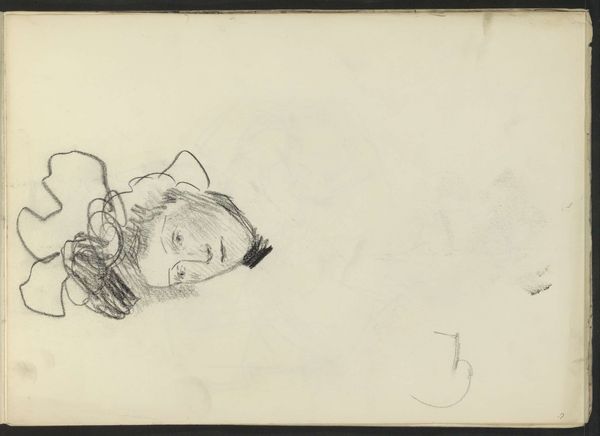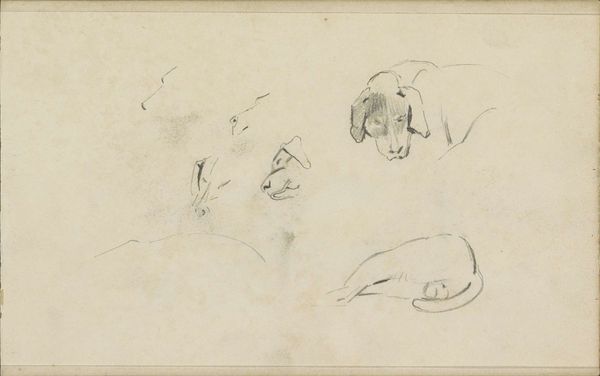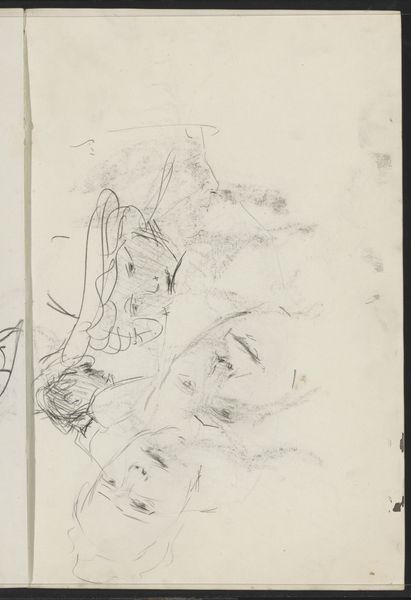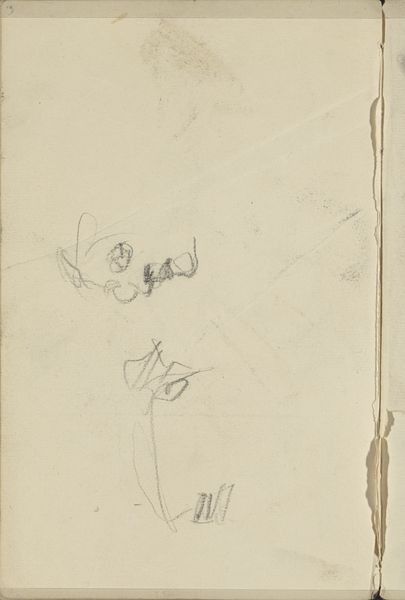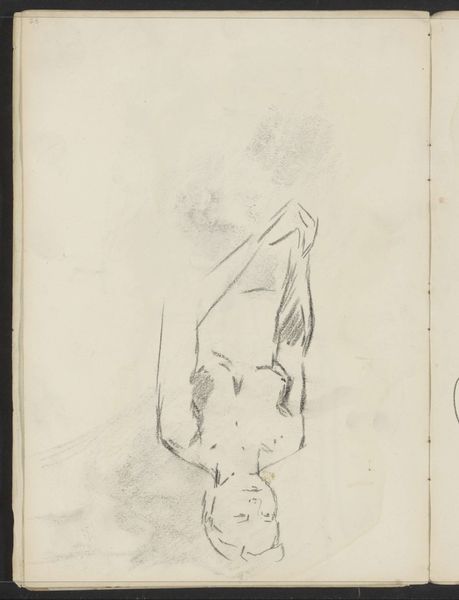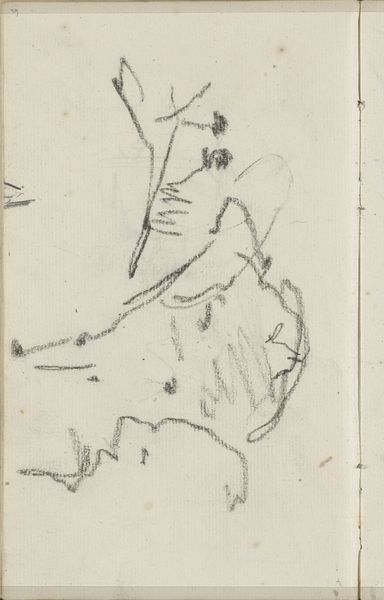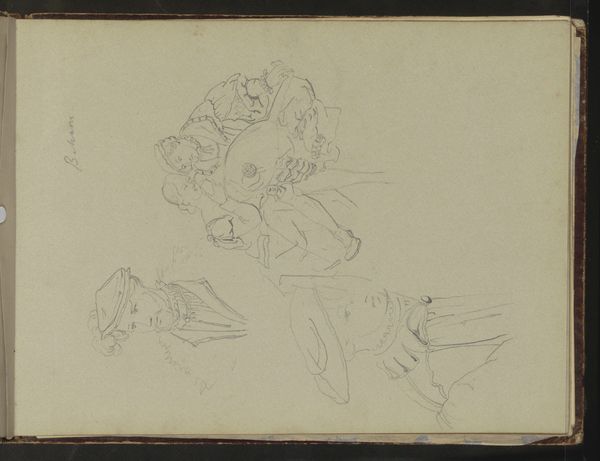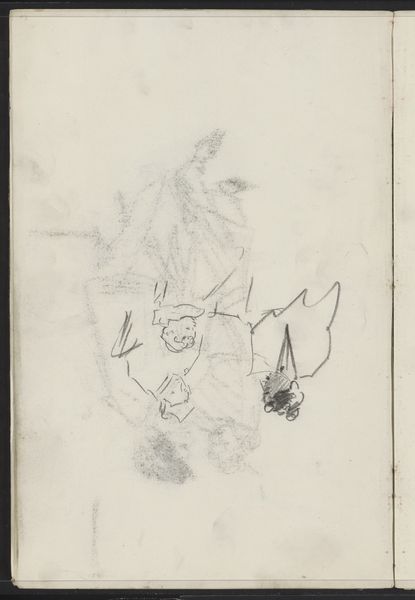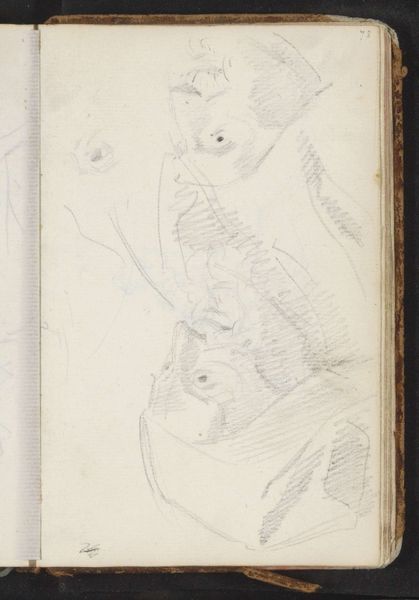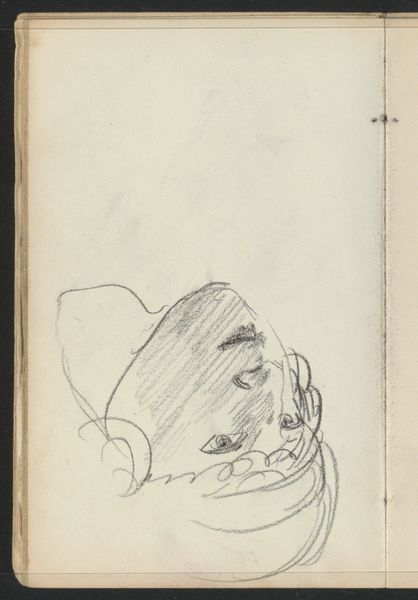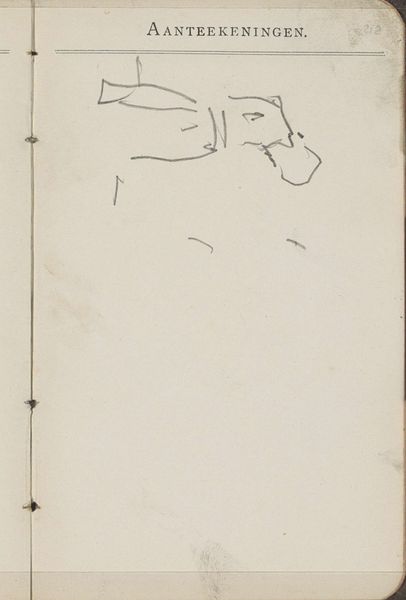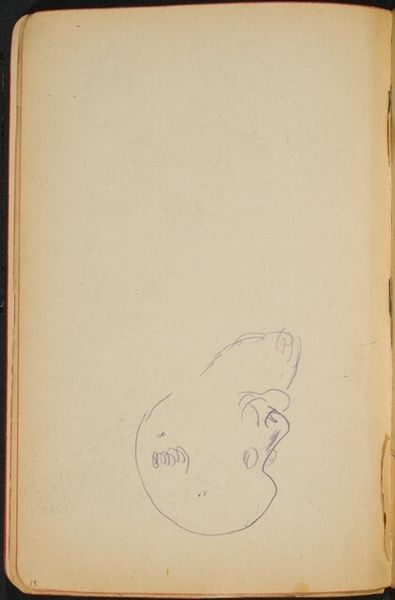
Copyright: Rijks Museum: Open Domain
Curator: Here we have Isaac Israels’ study, “Vrouwenhoofd in verschillende aanzichten,” or “Woman’s Head in Various Views," likely created between 1875 and 1934. The medium appears to be pencil on paper. Editor: There’s a certain ethereal quality to it, isn't there? Almost as if the faces are emerging from the paper itself. The lines are so delicate. Curator: Yes, observe how the minimal lines achieve a maximum effect. Israels uses the structure of the face to experiment with perspective and the suggestion of volume, with significant portions left to the viewer's imagination. Editor: And look at the visible sketchbook binding, the water stains around the edges. These elements emphasize the work as process, an artifact documenting the artist's exploration with form and technique. What paper would Israels have likely been using and how did its availability change across the decades this piece could have been produced? Curator: An interesting point. The materiality certainly plays a part, though it's subservient to the composition itself. Consider how Israels has positioned the heads; they seem to exist in relation to each other, a visual dialogue. Semiotically, this could suggest... Editor: Or is this efficient mark-making born out of the fast pace and disposability of modern urban life, where subjects and materials were consumed, repurposed, discarded in rapid cycles. Curator: An insightful interpretation related to social context, yet doesn't this downplay the careful construction? Notice how Israels varies the pressure of the pencil, creating depth and shadow, despite the work’s seemingly spontaneous execution? Editor: Perhaps. Yet, this interplay between precision and immediacy reflects a shift in artistic labor—the modern artist navigating industrial production. Curator: An astute materialist perspective. Ultimately, “Vrouwenhoofd in verschillende aanzichten" reveals itself through both an internal language of composition, and the conditions from which it originated. Editor: Right, it provides us both a glimpse into artistic experimentation, but equally into the historical landscape of labor and artistic production.
Comments
No comments
Be the first to comment and join the conversation on the ultimate creative platform.
